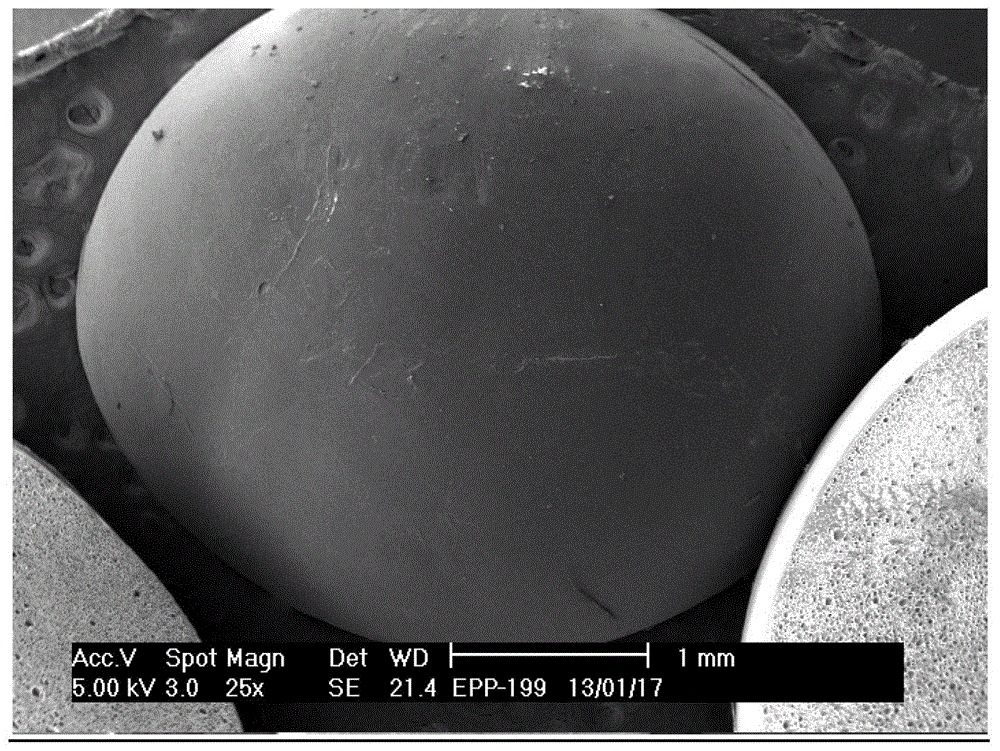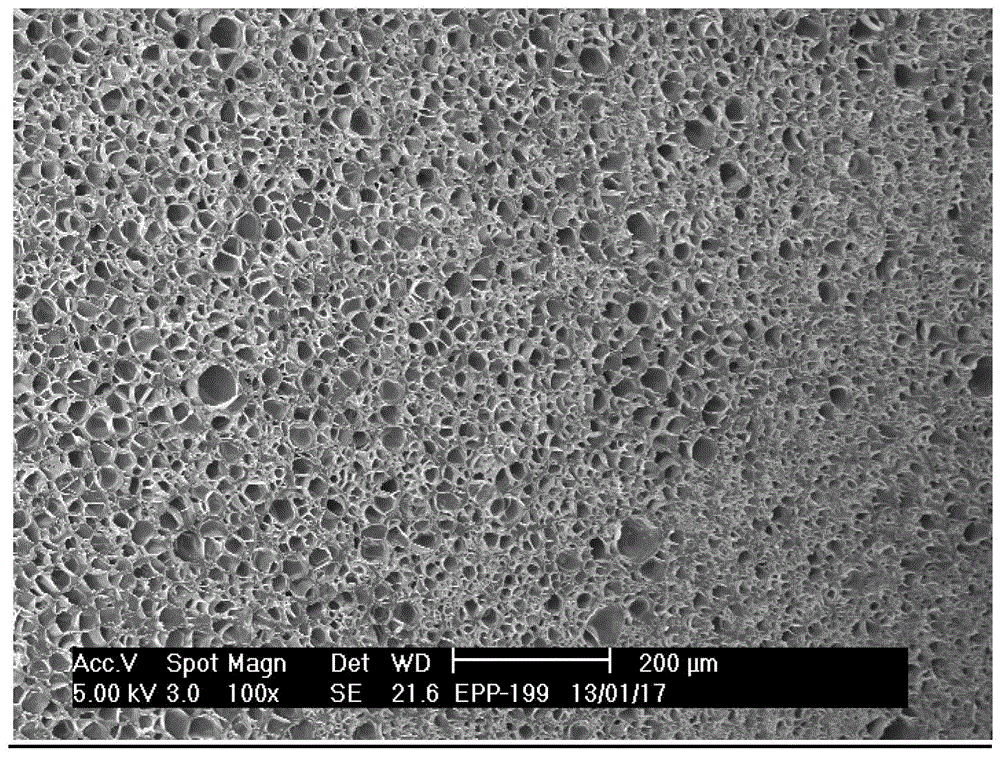A kind of preparation method of polypropylene expanded beads
A foaming bead and polypropylene technology, applied in the field of polymers, can solve the problems of narrow foaming window and unfavorable large-scale production, and achieve the effect of uniform cell diameter, low cost and uniform pore size distribution
- Summary
- Abstract
- Description
- Claims
- Application Information
AI Technical Summary
Problems solved by technology
Method used
Image
Examples
preparation example Construction
[0037] Preparation of matrix resin HMSPP501
[0038] The polymerization reaction was carried out on a polypropylene pilot plant. Its main equipment includes prepolymerization reactor, first loop reactor and second loop reactor.
[0039] Pre-polymerization reaction: the main catalyst (DQ-III catalyst, provided by Beijing Aoda Branch of Sinopec Catalyst Company) with a flow rate of about 0.5g / hr, the co-catalyst (triethylaluminum) with a flow rate of 6.33g / hr, and a flow rate of 0.63 g / hr of the first external electron donor (dicyclopentyldimethoxysilane, DCPMS) was pre-contacted at 6°C for 20 minutes, and then continuously added to the continuous stirred tank prepolymerization reactor for prepolymerization reaction. Prepolymerization It is carried out under the environment of the propylene liquid phase body, the temperature is 15°C, and the residence time is about 4 minutes. Under these conditions, the prepolymerization ratio of the catalyst is about 120 to 150 times. The mol...
Embodiment 1~30
[0050] First, the microparticles comprising 100 parts by weight of the matrix resin and the cell nucleating agent (silicon dioxide or zinc borate) shown in Table 2, and the additives are put into a high-speed mixer and mixed at high speed for 30 seconds, Add LabLine100 microparticle preparation system, control the torque at about 65%, rotate at 300rpm, and pelletize under water to obtain polypropylene resin particles. Wherein, the matrix resin used in Examples 1-15 is HMSPP501, and the matrix resin used in Examples 16-30 is HMSPP502. The cell nucleating agent used in Examples 1 to 4, 9 to 12, 16 to 19 and 24 to 27 is silicon dioxide, and the cells used in Examples 5 to 8, 13 to 15, 20 to 23 and 28 to 30 The nucleating agent is zinc borate. The additives used in Examples 1-30 all include 0.2 parts by weight of antioxidant 1010 (BASF company), 0.1 part by weight of antioxidant 168 (by BASF company) and 0.05 parts by weight of calcium stearate. Specifically, after blending the ...
PUM
| Property | Measurement | Unit |
|---|---|---|
| softening point | aaaaa | aaaaa |
| density | aaaaa | aaaaa |
Abstract
Description
Claims
Application Information
 Login to View More
Login to View More - R&D
- Intellectual Property
- Life Sciences
- Materials
- Tech Scout
- Unparalleled Data Quality
- Higher Quality Content
- 60% Fewer Hallucinations
Browse by: Latest US Patents, China's latest patents, Technical Efficacy Thesaurus, Application Domain, Technology Topic, Popular Technical Reports.
© 2025 PatSnap. All rights reserved.Legal|Privacy policy|Modern Slavery Act Transparency Statement|Sitemap|About US| Contact US: help@patsnap.com



